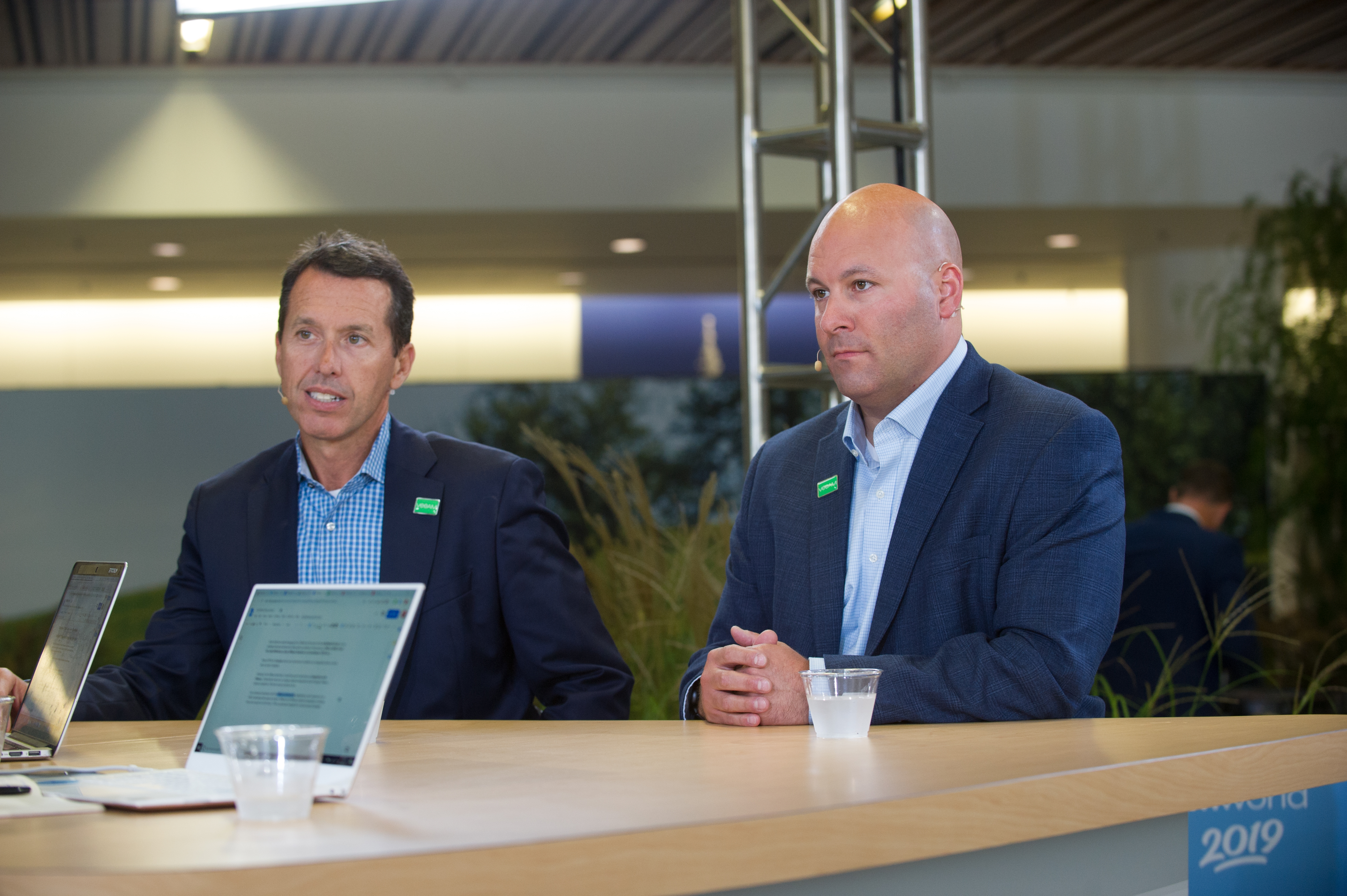 INFRA
INFRA
 INFRA
INFRA
 INFRA
INFRA
Many companies today are weighing VMware Inc. virtual machines against containers’ virtualized method for running distributed applications. The dilemma teeters on tough choices about on-premises versus cloud versus cloud native, and all the associated costs. VMware and partners are trying to pave a middle way with space for all.
As part of that ecosystem, Veeam Software Inc. built its brand as a backup solution for VMs. With Project Pacific, VMware has signaled that it doesn’t want to fight the containers movement, but rather join it. And Veeam is coming along for the ride. Its customers are largely on-prem, but many are exploring hybrid cloud, container tech and the open-source container orchestration platform Kubernetes.
“It’s all about how we help our customers in that world,” said Ken Ringdahl (pictured, right), vice president of global alliance architecture at Veeam. “So when you see a new trend, you say, ‘We can protect that.'”
Ringdahl and Carey Stanton (pictured, left), vice president of global business and corporate development at Veeam, spoke with Dave Vellante (@dvellante) and John Furrier (@furrier), co-hosts of theCUBE, SiliconANGLE Media’s mobile livestreaming studio, during the VMworld event in San Francisco. They discussed Veeam’s continuing partnership with VMware and its pivot to hybrid cloud and containers (see the full interview with transcript here). (* Disclosure below.)
While Veeam began life as a sidekick to VMware, it has since broadened its scope and joined the class of next-gen data-protection providers. It still works closely with VMware, however, which is why, oddly enough, it’s embracing containers. Actually, it’s not so strange, according to Ringdahl.
“The way that containers are delivered — it’s inside of a system regardless. So sometimes it’s inside a VM; sometimes it’s within a physical system. We can protect and support what’s there,” he said.
Many customers today are hurrying to put legacy apps into containers, all in an effort to achieve cloud status, all the while building new stateless apps in addition to containerized migrations. “We can support the customers today when they move to a stateful system. And we’re evaluating how we support the stateful long-term view of Kubernetes,” Ringdahl said.
Veeam’s relationship with VMware extends to engineering. “We’re at the table working with them. We’re only going to get closer as they go into new technologies,” Stanton said.
The two companies will be announcing new solutions for their customers in coming weeks.
Watch the complete video interview below, and be sure to check out more of SiliconANGLE’s and theCUBE’s coverage of the VMworld event. (* Disclosure: Veeam Software Inc. sponsored this segment of theCUBE. Neither Veeam nor other sponsors have editorial control over content on theCUBE or SiliconANGLE.)
Support our mission to keep content open and free by engaging with theCUBE community. Join theCUBE’s Alumni Trust Network, where technology leaders connect, share intelligence and create opportunities.
Founded by tech visionaries John Furrier and Dave Vellante, SiliconANGLE Media has built a dynamic ecosystem of industry-leading digital media brands that reach 15+ million elite tech professionals. Our new proprietary theCUBE AI Video Cloud is breaking ground in audience interaction, leveraging theCUBEai.com neural network to help technology companies make data-driven decisions and stay at the forefront of industry conversations.